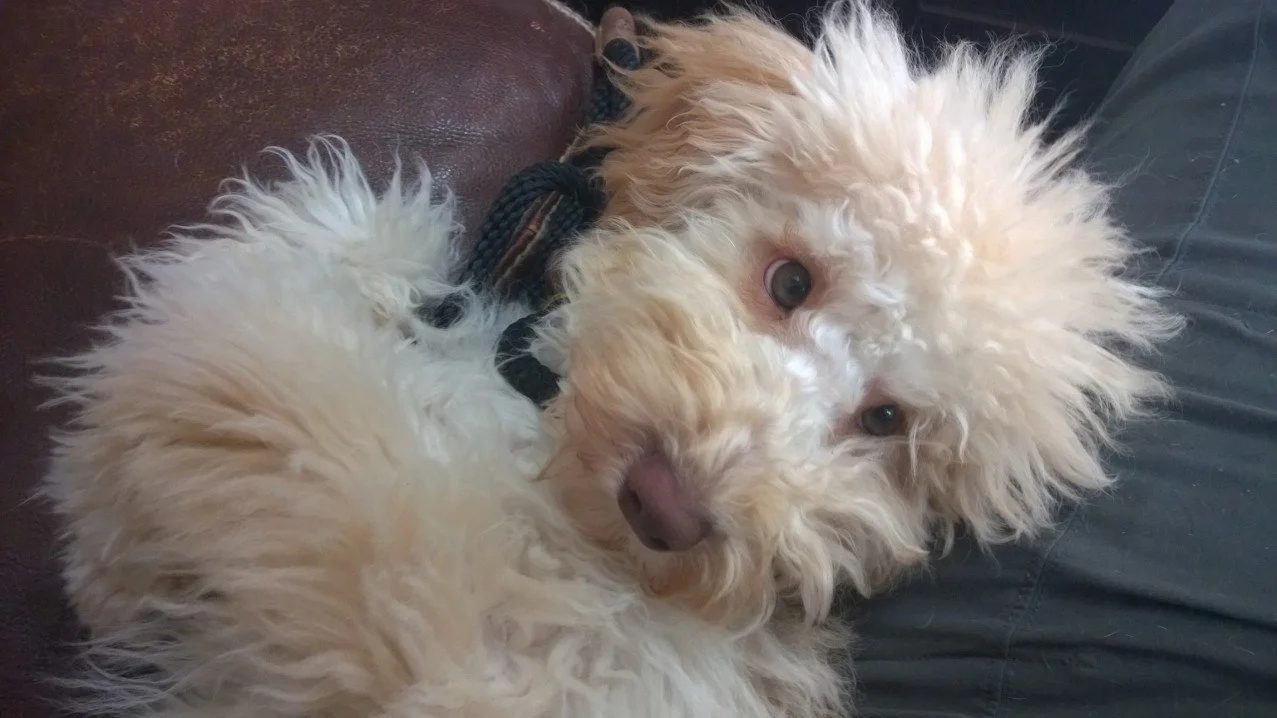Resistance From Your Dog During Training
I’m cute and you can’t make me.
Introducing new rules to your dog can be a challenging task. Dogs, like humans, are creatures of habit and may resist change because they are used to their current routine. It's important for dog owners to understand that their dogs have their own personalities and may be more stubborn or independent, making it harder for them to adapt to new rules. If you are challenging their self-appointed role as leader of the pack or they have simply been spoiled rotten, it’s going to be a test and battle of the wills.
To help your dog accept new rules, it's essential to be consistent and patient. Getting frustrated will only make the process harder for both you and your dog. Instead, using a calm and assertive tone and body language can help communicate that you are the leader and help your dog understand the new expectations.
It's also important to understand why the exercises may be presented. Any of these changes, the Feeding Protocol, Advancing your obedience or the NILF protocol is not really for the sake of the command — it’s for how and why you use it to achieve better behavior and a dog that yields to your leadership. Trust me, once you have this, you’ll wonder why you didn’t do it sooner!
Before assuming that the dog is the problem - be sure you have been teaching clearly, consistently, and in the way in which your dog learns and is motivated first! Sometimes, resistance is more about confusion and frustration.
But if you know your dog knows what you’re asking him to do and you’re feeling tested — read on.
Scenarios In Which Your Dog May Test You
Your dog is going to give you puppy dog eyes and hope you’ll give in to whatever exercise you’re working on.
Your dog will move into funny antics to get you to giggle and stop.
Your dog will act as if you have punished them and pout.
Your dog may hit the brakes during your walk.
Your dog may flop into a down instead of holding a sit-stay.
Your bully or bratty dog may escalate their behavior and attitude trying physically or verbally to convince you to stop. If this is happening, we need to talk about your next steps to stay safe and still get your desired outcome.
Your dog will challenge you when you begin duration work for Place when they would rather be sitting on the couch or chewing a bone. The goal is that they learn to relax patiently and wait. They will test to see how many times you get up and put them back before you let them off the hook. But, you won’t. This will be puzzling to them.
Your dog will also resist settling down when you begin sit on the dog. It’s new, and it’s frustrating and confusing for them to be restricted for the first time. It’s ok for them to go through that and learn to cope with new rules.
When you stop repeating yourself and implement consequences for demanding attention, food or play, your dog will most likely up the ante. But, when you demonstrate a change in your behavior, energy, and language, your dog is going to feel that change and start to adjust their own energy and behavior. Leadership is a powerful thing, and most dogs once they understand it will appreciate it.
Once your dog understands the position of the down and the release work, proofing is a matter of the 3D's: distance, duration, and distraction. A down-stay in the guest bathroom isn’t a normal activity. The first time you try it, your dog will resist. But, this is about creating obedience and getting your dog to do what you ask, when you ask, where you ask, just because you asked. If you cannot get your dog to do this, you may struggle with getting separation anxiety or guest arrival skills under control, especially if your dog is highly anxious or aggressive.
It's crucial to note that this is not meant to be a creation of the absence of playtime and affection. You’ll get back to that point soon enough. But you’ll have a better balance of your dog’s behavior and a dog that listens and respects you fully. Your relationship will be stronger.
So, you need to be prepared to reinforce the exercise you’re working on for the scheduled duration. You may need to work the exercise until the dog gives in and gives up the resistance. You have to follow through, calmly and consistently every single time until they get the message.
The resistance is normal! Including your resistance to me requiring you to do this!
<Video About Mal>

